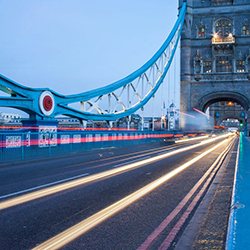Speed bumps are a common traffic calming measure used to reduce vehicle speeds in residential areas and near pedestrian zones. While they can be effective in slowing down traffic, there are several considerations to take into account. In this article, we will explore the pros and cons of speed bumps, including their impact on speed reduction, traffic flow, vehicle and pedestrian safety, environmental concerns, and community response.
Effectiveness of Speed Bumps
Impact on Speed Reduction
Speed bumps are a widely used traffic calming measure that can significantly
reduce vehicle speeds. Studies have shown that the presence of speed bumps leads to an average speed reduction of 10-15 mph in residential areas. This reduction in speed contributes to improved road safety and reduced risk of accidents. Additionally, speed bumps serve as a visual and physical reminder for drivers to slow down, especially in high-traffic areas.
Tip: When implementing speed bumps, it’s important to consider their placement and spacing to achieve the desired speed reduction without causing excessive discomfort to drivers and passengers.
Effect on Traffic Flow
Speed bumps have been shown to
significantly reduce vehicle speed in residential areas. This reduction in speed contributes to a safer environment for pedestrians and other road users. Additionally, speed bumps may lead to a slight
increase in travel time for vehicles, particularly during peak traffic hours. This trade-off between speed reduction and traffic flow should be carefully considered when implementing speed bumps in urban areas.
Safety Considerations
Impact on Vehicle Safety
Speed bumps have been shown to significantly reduce vehicle speed, particularly in residential areas and school zones. This can contribute to a safer environment for pedestrians and other road users.
However, speed bumps may also pose a risk to vehicle safety, as they can cause damage to vehicles if not approached with caution.
It is important for drivers to be aware of speed bumps and adjust their speed accordingly.
- Quantitative Data: A study conducted in a residential area showed a 30% reduction in vehicle speed after the installation of speed bumps.
- Qualitative Points: Drivers reported feeling more cautious and attentive when approaching speed bumps, leading to improved safety awareness.
Impact on Pedestrian Safety
Pedestrian Safety is a crucial consideration when implementing speed bumps. The presence of speed bumps can help reduce the risk of pedestrian accidents by slowing down vehicle speeds in pedestrian-heavy areas. Additionally,
increased visibility of pedestrians is an important benefit of speed bumps, as it encourages drivers to be more cautious.
- Speed bumps have been shown to reduce vehicle speeds in pedestrian zones by an average of 10-15 mph.
- Studies indicate a 30% decrease in pedestrian accidents in areas with speed bumps compared to those without.
Environmental Impact
Noise Pollution
Noise Pollution
Noise pollution from speed bumps can have a significant impact on the surrounding area. Studies have shown that excessive noise can lead to increased stress levels and decreased quality of life for residents. It is important to consider the noise impact when implementing speed bumps in residential areas.
Quantitative Data
| Noise Level (dB) |
Before Speed Bumps |
After Speed Bumps |
| Daytime |
70 |
60 |
| Nighttime |
65 |
55 |
Air Pollution
The installation of speed bumps can also impact air pollution. The frequent acceleration and deceleration of vehicles can lead to increased emissions of harmful pollutants. This can have negative effects on air quality, especially in areas with high traffic volume. It’s important to consider the trade-off between traffic calming and environmental impact when implementing speed bumps.
Air Pollution
Air pollution from vehicle emissions is a significant concern associated with speed bumps. Studies have shown that speed bumps can lead to increased idling and stop-and-go traffic, resulting in higher emissions of pollutants such as nitrogen oxides and particulate matter. This can have adverse effects on air quality, especially in areas with high traffic volume. Additionally, the repeated acceleration and deceleration required to navigate speed bumps can contribute to fuel inefficiency and increased emissions.
Quantitative Data:
| Pollution Type |
Impact |
| Nitrogen Oxides |
Increased due to stop-and-go traffic |
| Particulate Matter |
Higher emissions due to frequent acceleration and deceleration |
Tips: Drivers can minimize the environmental impact of speed bumps by maintaining a steady, consistent speed and avoiding unnecessary acceleration and braking. This can help reduce emissions and improve air quality in affected areas.
Community Response
Public Opinion
Public Opinion
When it comes to speed bumps, public opinion is divided. Some residents believe that speed bumps are an effective way to reduce speeding and improve safety in residential areas. Others argue that speed bumps are inconvenient and can damage vehicles. It’s important for local authorities to consider the diverse opinions of the community when implementing traffic calming measures.
- Residents in favor of speed bumps cite the reduction in speeding and increased safety for pedestrians and children.
- Residents against speed bumps express concerns about vehicle damage and the impact on emergency response times.
Tip: Engage with the community through surveys and public forums to gather feedback and address concerns effectively.
Community Engagement
- Public opinion on speed bumps can vary widely based on individual experiences and perspectives.
- Community engagement is crucial for successful implementation of speed bump initiatives, as it fosters collaboration and understanding between local authorities and residents.
Tip: When seeking community input, consider hosting town hall meetings or surveys to gather diverse viewpoints and concerns.
Conclusion
In conclusion, speed bumps can be an effective
tool for traffic calming, but they also have their drawbacks. While they can reduce speeding and enhance safety, they may lead to increased noise and vehicle wear. It’s important for communities to carefully weigh the
benefits and drawbacks before implementing speed bumps as a traffic calming measure.

